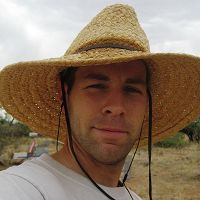Field et al., 2010
Biophysical drivers of erosion and aeolian transport in semiarid grasslands: Consequences of prescribed fire, livestock grazing and climate variability
Field, J.P., Breshears, D.D., Whicker, J.J. (2010)
AGU Fall Meeting (Invited) Abstract B22B-07.
-
Catalina-Jemez, INVESTIGATOR
-
Catalina-Jemez, INVESTIGATOR
Abstract
Aeolian sediment transport operates over a range of spatial and temporal scales and can have important implications for atmospheric, hydrologic, and biogeochemical processes, especially in arid and semiarid ecosystems where ground cover is inherently sparse. A key consequence of sparser vegetation cover and drier soils is the potential for increased erosion and aeolian transport. Further, many arid and semiarid ecosystems are undergoing accelerated land degradation due to increased climate variability, as well as increased land-use activities such as prescribed fire and livestock grazing, both of which can have substantial effects on erosional losses through aeolian and fluvial processes. Despite the fundamental importance of both aeolian and fluvial processes within these systems, relatively few measurements of aeolian sediment transport have been made that span multiple wind events following land-use activities or wet/dry climate extremes. Here we report co-located estimates of aeolian and fluvial sediment transport in a semiarid grassland under different land-use practices (grazed, burned, and burned+grazed) for a three-year study period, which included a year with wet-dry extremes—providing an opportunistic analog to projected global-change-type climate. We also report estimates of aeolian sediment transport into and out of bare-, herbaceous-, and shrub-dominated patch types for both simulated and natural dust events, as well as in response to simulated disturbance. Our results indicate that disturbance can have a large effect on erosion and aeolian transport at the plot scale and vegetation-patch scale and that the type and intensity of disturbance plays an important role in determining the magnitude and the severity of the response. Notably, results indicate that wet/dry climate extremes can substantially increase the wind-to-water sediment transport ratio, whereas burning disproportionally increases fluvial sediment transport relative to aeolian sediment transport. We also show that at the vegetation-patch scale shrubs are significantly more efficient at capturing wind-blown sediment and other ecological resources than grasses and that this difference is amplified following disturbance, which can have important biogeochemical implications with respect to nutrient uptake and transport pathways. More generally, our results indicate that aeolian transport will likely increase relative to fluvial transport under such global-change-type climate conditions, that fire and grazing can particularly amplify these rates, and that changes in vegetation patches have important biogeochemical implications in the context of desertification and land-surface dynamics.
Citation
Field, J.P., Breshears, D.D., Whicker, J.J. (2010): Biophysical drivers of erosion and aeolian transport in semiarid grasslands: Consequences of prescribed fire, livestock grazing and climate variability. AGU Fall Meeting (Invited) Abstract B22B-07..
Explore Further


